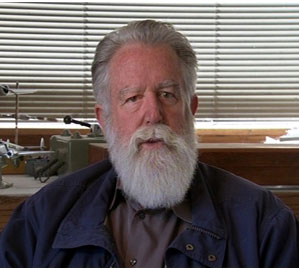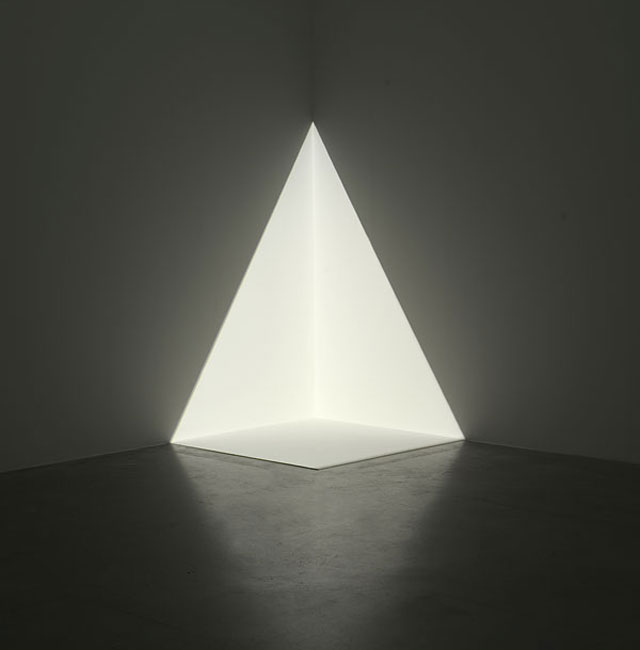James Turrell, Alta (White), 1967
James Turrell (born May 6, 1943) is an American artist primarily concerned with light and space. Turrell was a MacArthur Fellow in 1984. Turrell is best known for his work in progress, Roden Crater, a natural cinder cone crater located outside Flagstaff, Arizona that he is turning into a massive naked-eye observatory.
“Well, my interest is working with light and space.
And you got light and you got space, there’s no doubt of that. And it’s always something to work with light in the outdoors.
That’s something that I wanted to do, wanted to shape space, to use the light that was here naturally.
Also, I wanted to use the very fine qualities of light.
First of all, moonlight.
Also, there’s a space where you can see your shadow from the light of Venus alone – things like this.
And also wanted to gather starlight that was from outside,
light that’s not only from outside the planetary system
which would be from the sun or reflected off of the moon or a planet,
but also to emanate light from the galactic planes
where you’ve got this older light
that’s away from the light even of our galaxy.
So that is light that would be at least three and a half billion years old.
So you’re gathering light that’s older than our solar system.
And it’s possible to gather that light,
it takes a good bit of stars to do that,
and a good look into older skies, away from the Milky Way.
You can gather that light and physically have that in place so that it’s physically present to feel this old light.
That’s something that you can do here in a place like this,
where you have good, dark skies.
So to have this sort of old blended light and to have this sort of new,
eight and a half minute old light from the sun.
And I wanted to look at light that way, because to feel it physically,
almost as we taste things, was a quality I wanted.”
In 1966, Turrell began experimenting with light in his Santa Monica studio, the Mendota Hotel, at a time when the so-called Light and Space group of artists in Los Angeles, including Robert Irwin, Mary Corse and Doug Wheeler, was coming into prominence. By covering the windows and only allowing prescribed amounts of light from the street outside to come through the openings, Turrell created his first light projections. In Shallow Space Constructions (1968) he used screened partitions, allowing a radiant effusion of concealed light to create an artificially flattened effect within the given space. That same year, he participated in the Los Angeles County Museum’s Art and Technology Program, investigating perceptual phenomena with the artist Robert Irwin and psychologist Edward Wortz. In 1969, he made sky drawings with Sam Francis, using colored skywriting smoke and cloud-seeding materials. A pivotal environment Turrell developed from 1969 to 1974, for The Mendota Stoppages several rooms in the former Mendota Hotel in Santa Monica were sealed off, the window apertures controlled by the artist to allow natural and artificial light to enter the darkened spaces in specific ways.

